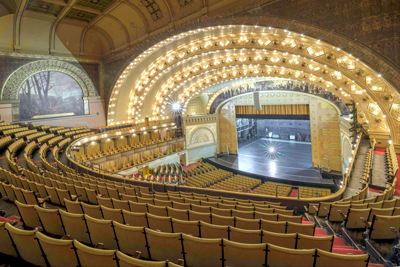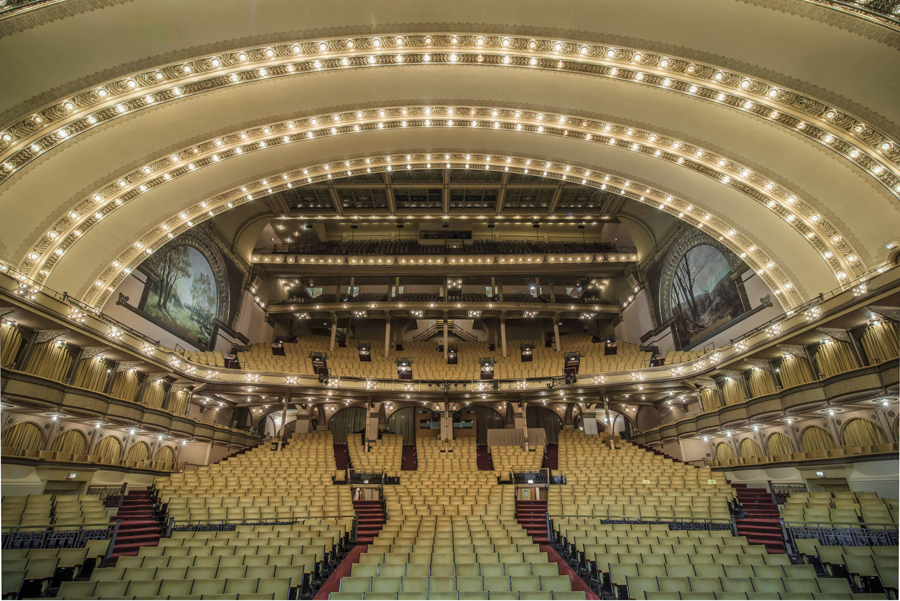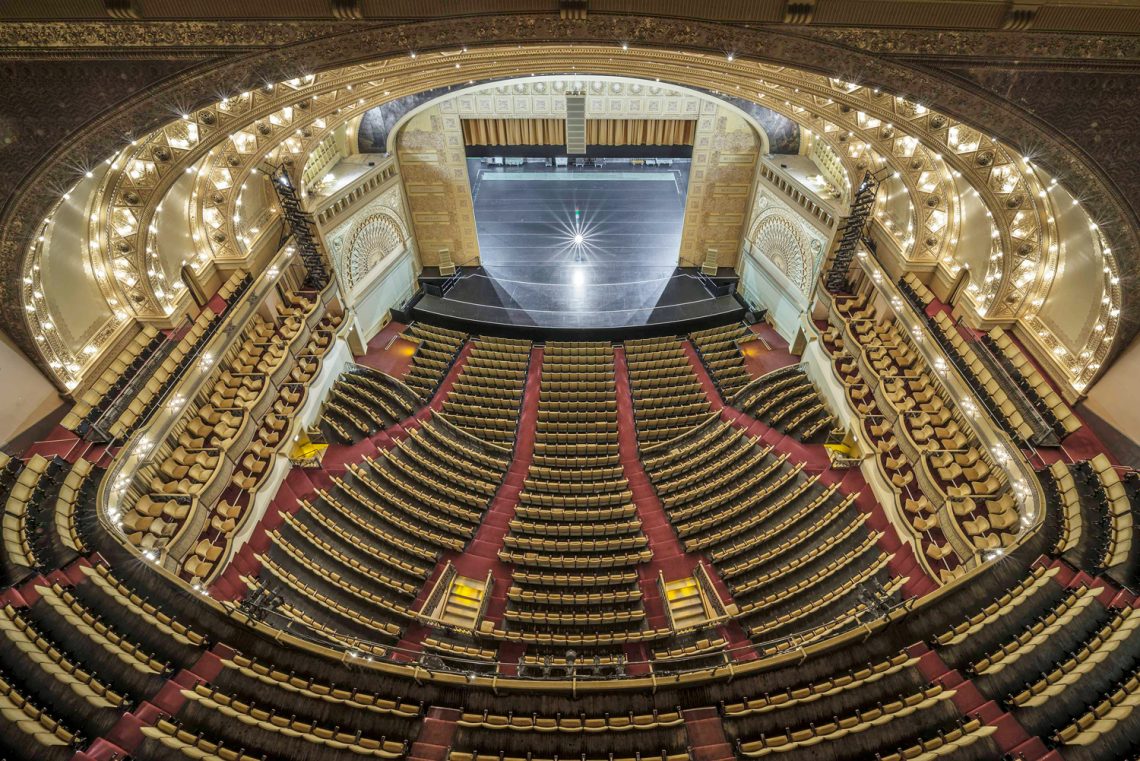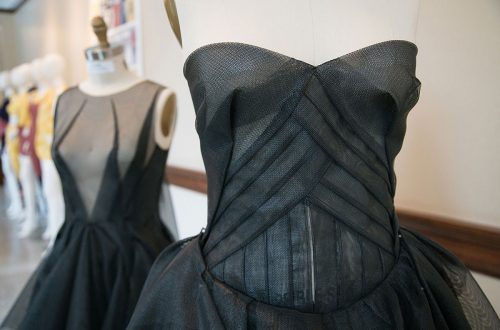 Since its establishment in 1889, the Auditorium Theatre in Chicago’s Grant Park neighborhood has been an integral piece of the area’s architectural record and community engagement efforts. Many know the theatre for its distinctive original architecture by one of Chicago’s most influential design pair, Louis Sullivan and Dankmar Adler, but it is also known for an extensive restorative effort that began in the 1960s and continues today.
Since its establishment in 1889, the Auditorium Theatre in Chicago’s Grant Park neighborhood has been an integral piece of the area’s architectural record and community engagement efforts. Many know the theatre for its distinctive original architecture by one of Chicago’s most influential design pair, Louis Sullivan and Dankmar Adler, but it is also known for an extensive restorative effort that began in the 1960s and continues today.
In July 2019, the League of Historic American Theatres recognized the Auditorium Theatre for its restorative and programmatic achievements thus far, presenting it with the award for 2019 Outstanding Historic Theatre at the LHAT’s National Conference in Philadelphia.
“The historic Auditorium stood out among an impressive list of nominations to claim the award this year,” said Ken Stein, president and CEO of the LHAT, as he presented the award. “Considering it is one of the great historic preservation projects in the nation, I am surprised it has taken us this long to bestow this award on the Auditorium.”
Other than the quality of physical restoration, the Outstanding Theatre Award recognizes a theatre’s excellence through community impact and quality of programming; features that have defined the Auditorium Theatre since its early years as “a theatre for the people.” Born from the friction of Chicago’s Haymarket Square riot in 1886, the theatre’s mission and original design embodied the democratic ideals of its creators, who sought to make art accessible to all of Chicago, and not just its elite.
In its early decades, when it was home to the Chicago Symphony Orchestra and played host to guests like Booker T. Washington and Theodore Roosevelt, the Auditorium Theatre was a picture of unprecedented technology and design. Features like Sullivan’s ornate gold detailing and organic plaster reliefs paired with unrivaled acoustics courtesy of Adler’s technical prowess in the theatre itself, while its surrounding Auditorium Building was designed to be bold and Romanesque. The result was the largest building in the country at the time, which many deem the duo’s most evocative and groundbreaking designs.
Yet, following debilitating financial troubles and wartime alterations in the 1940s, the theatre fell into disrepair and about two decades of closed doors before being rescued by Roosevelt University and the fundraising efforts of university trustee Beatrice Spachner. Along with the architectural guidance of prolific architect Harry Weese, the theatre’s surrounding community pulled it from deterioration in a nearly decade-long restoration effort—one of the largest in the country. Upon re-opening in the late 1960s, the theatre once again began hosting the most iconic artists of the time, such as Janis Joplin, David Bowie, and Miles Davis.

The Auditorium Theatre’s preservation effort continues today, and has recently included restoring Sullivan’s original gold stenciling in the Dress Circle lobby, new drapery and carpeting, and an installation of LED lighting adhering to the color temperature of the building in its early years.
Today, the theatre’s original purpose as “a theatre for the people” continues to ring true; it attracts crowds of approximately 300,000 people each year due to dedicated community support and a diverse range of event programming that reflects the diversity and complexity of Chicago, from dance performances by the Ballet Folklórico de México to speakers like David Sedaris. In the wake of receiving the LHAT’s National Conference award for Outstanding Historic Theatre, the Auditorium Theatre will also celebrate its 130th anniversary in December.
“When the Auditorium first opened, it helped establish Chicago as a world-class city,” stated Rachel Freund, Interim CEO of the Auditorium Theatre in reference to the award. “It continues to significantly contribute to the city’s cultural, historical, and architectural landscape today; thanks to the support of the amazing people of Chicago and the patrons from around the world who come through our doors each year.”
Among the LHAT’s annual National Conference, which is one of the world’s largest gatherings of historic theatre professionals and community leaders, the organization’s own programming is driven by an initiative to preserve historic theatres and their unique indicators of artistic history. Its main purpose is to sustain theatres like the Auditorium Theatre across North America for the continued benefit of their communities and future generations.
Text: R. Collins | GLBD staff writer
Photography: John Boehm | Auditorium Theatre





